March 17, 2019 - ADS-B Out Install and Test Flight
|
|
Yes, it's time to address the dreaded ADS-B "Out" unfunded mandate.
Automatic Dependent Surveillance – Broadcast (ADS-B) works thusly. Aircraft get their position from the very accurate Wide Area Augmentation System (WAAS) GPS which gives a position accuracy of better than 3 meters, 95 percent of the time (regular GPS is 15 meters). It's good enough for precision flight approaches. The aircraft broadcasts its position, speed, altitude and other information like N-number to any aircraft or ground station equipped to receive it. Ground stations transmit the aircaft's position and information to air traffic control. As of this date, I believe there are more than 700 of these ground stations already operational, providing decent coverage of the entire U.S.
By 2020, all aircraft operating in most US airspaces will be required to carry equipment that produces an ADS-B Out broadcast.
I already had ADS-B "In" by virtue of buying the ForeFlight Scout at AirVenture for $200. This allowed me to see aircraft traffic and weather information on an iPad in the cockpit. I already had weather with XM Satellite -- which I pay for -- but the traffic was something new.
But I didn't have ADS-B "Out", which is what is mandated. I suppose one could get away with not having it if one never flew into Mode C Veil airspace, Class B/C/D airspace or go above 10,000 feet. But my home runway is within the Baltimore-Washington International Mode C veil. For me, there is no escape. Plus, as you know, I do get around. So I waited as long as I could but finally the time has come to take the plunge.
Now, supposedly, in 2020 I'll see all traffic within a 30 mile diameter and +/- 3500 ft.
It's going to be very interesting to see what happens on January 1, 2020 and thousands of GA planes do not have ADS-B Out installed. What will happen to the guy who blows through a Mode-C veil in an ADS-B Out unequipped airplane?
What ADS-B Out solution should I use? Nine months prior to the deadline, it seems like the solutions had boiled down to two: the Garmin GDL-82 and the uAvionics skyBeacon. The skyBeacon was a much easier install but wasn't a good fit for my wingtip strobes. So I ordered the Garmin GDL-82 from Aircraft Spruce. I also ordered the harness for $24 but I ended up not using it; making my own. After rebate, my solution cost around $1,300. Of course, I was able to do my own installation. I don't want to say how many hours I spent on it -- I'm a slow workers -- but I will say the uAvionics install is much, much quicker and easier than the Garmin. But again, I couldn't go that route. Still, the Garmin works great and I have no issues with it.
|
| |
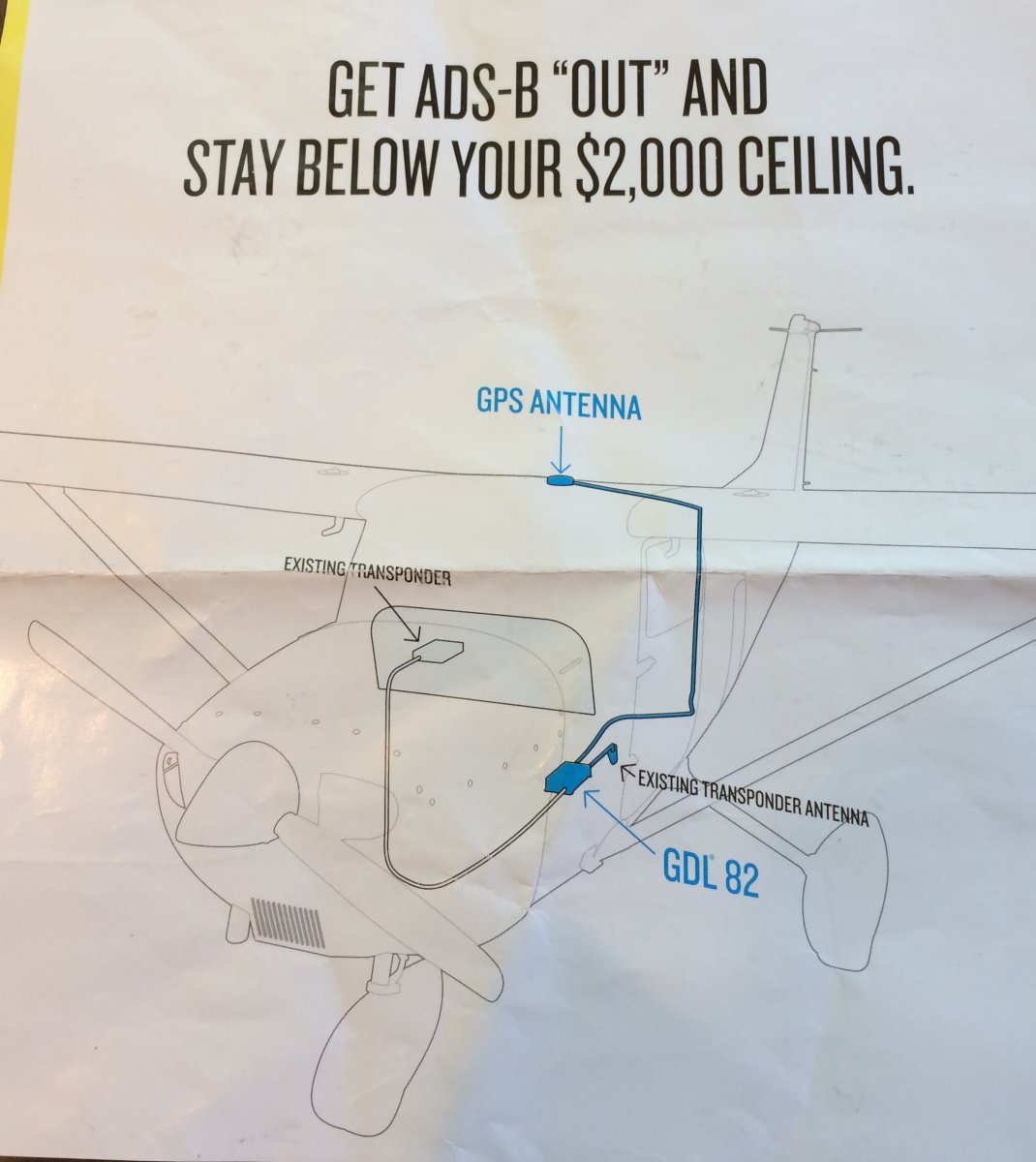 |
|
|
The Garmin system consisted of a 2"x2"x4" rectangular brainbox and a WAAS GPS antenna. When I went to mount the brain box behind the panel, I discovered that I have very little real estate back there. In fact, I ended up mounting the brain box in virtually the only open space left to do so -- a bulkhead behind the panel. It's always fun to lay on your back under the panel in the RV-7 (not!) but I managed somehow to mount the brain box.
So here is one end of the brainbox, with the cable connectors for the transponder antenna and the WAAS GPS antenna. Notice the mounting bracket I made out of some scrap aluminum angle. I suppose I could have mounted the brain box directly to the bulkhead but I thought it would be easier with the homemade mounts.
|
| |
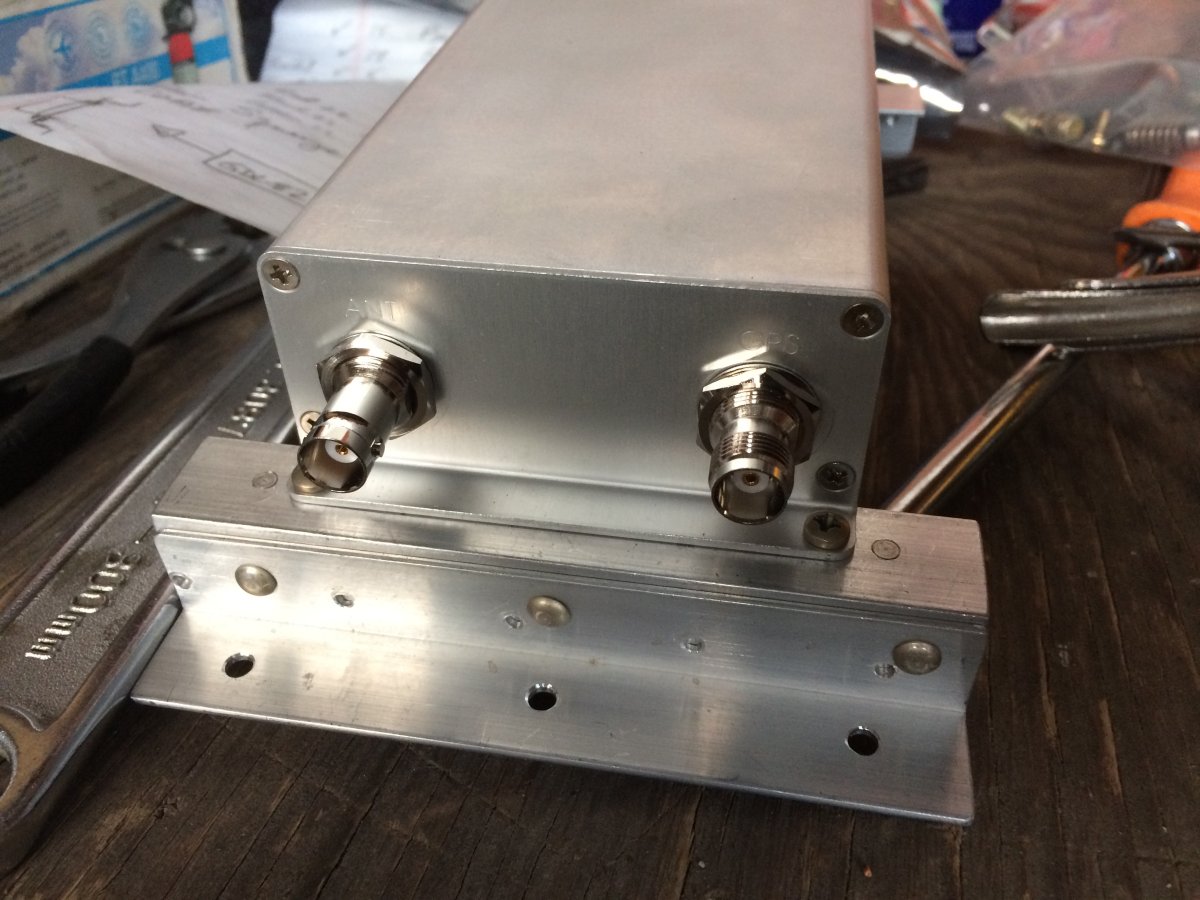 |
|
|
The other end of the brain box, featuring the cable connector for the transponder -- a very short cable run -- and the 15-pin DSub connector port. Note the three rows of pin openings on it.
|
| |
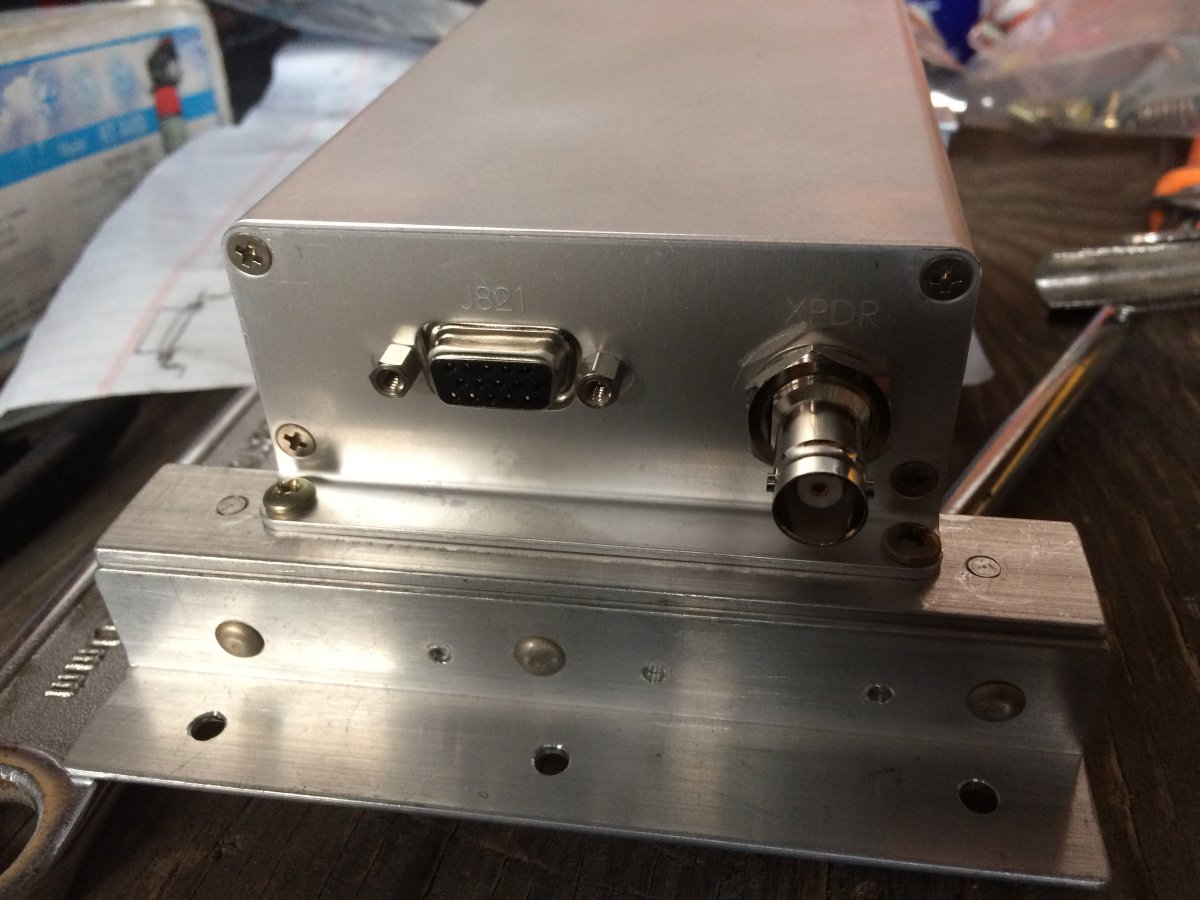 |
|
|
Next was the WAAS GPS Antenna installation. I have my Garmin 486GPS, XM Satellite, and COMM/GPS antennas mounted on a little horizontal tray on the engine side of the firewall, up high. But the navigational functionality of the COMM/GPS is very old school, and for ten years I've never used it, so I removed the COMM/GPS antenna and put the new WAAS GPS antenna in its place.
The entire system requires three coax cables: brainbox to transponder, brainbox to transponder antenna, and brainbox to WAAS antenna. I was able to reuse my transponder cabe but had to make new cables for the other two. This was kind of fun; it's not my first rodeo.
Here is a picture of the new WAAS GPS antenna mounted on my "antenna tray" up high on the firewall.
|
| |
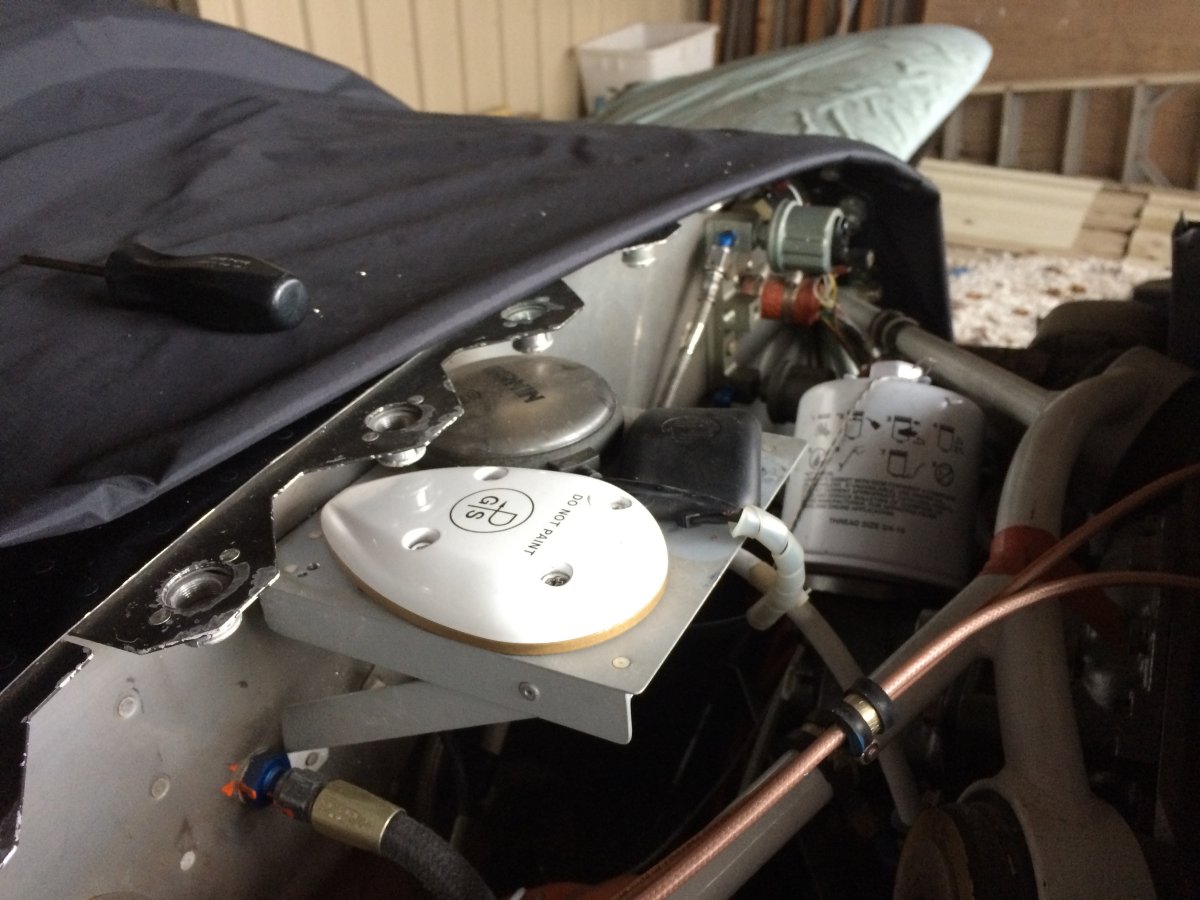 |
|
| I did this while it was snowing outside the hangar. |
| |
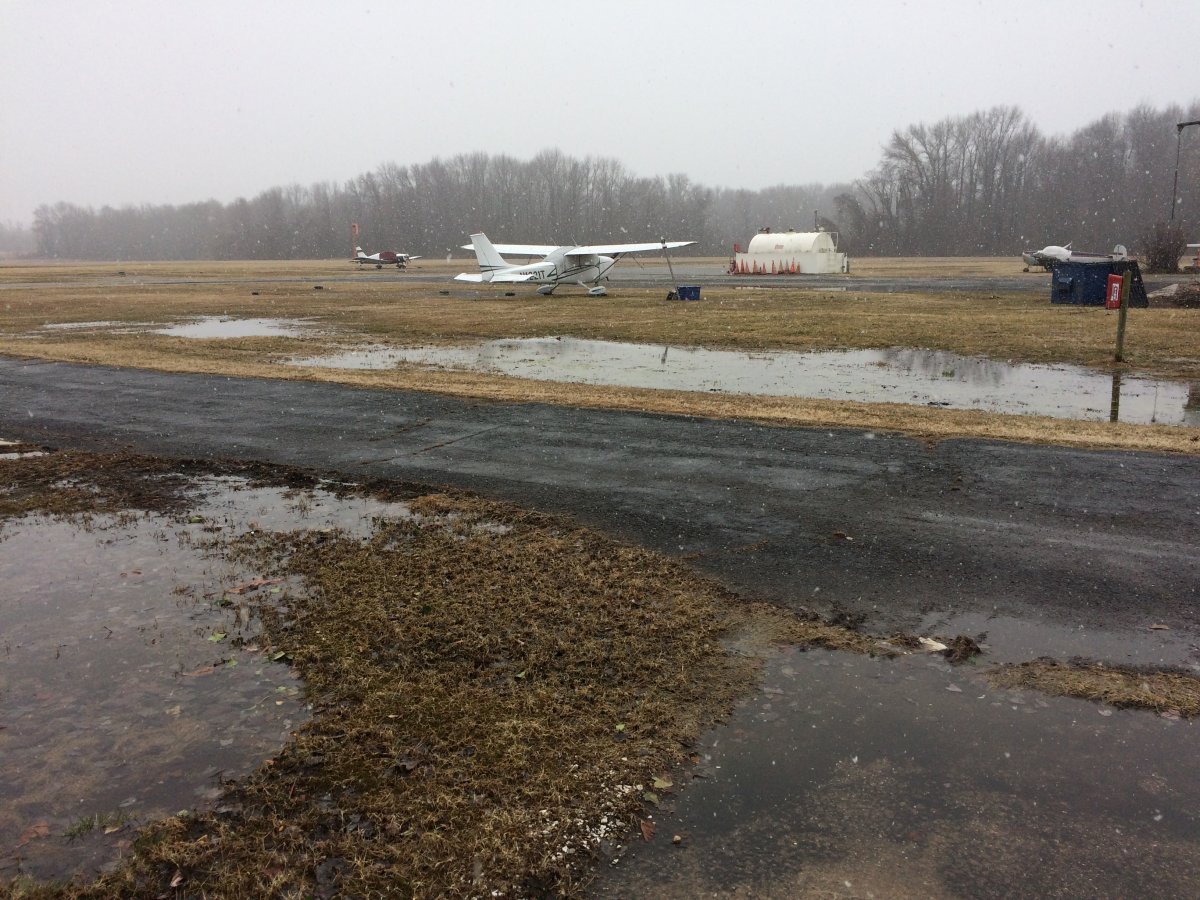 |
|
| This was the high water mark for the snow. It stopped soon after and the light dusting on the ground was gone by the time I left the Skypark. |
| |
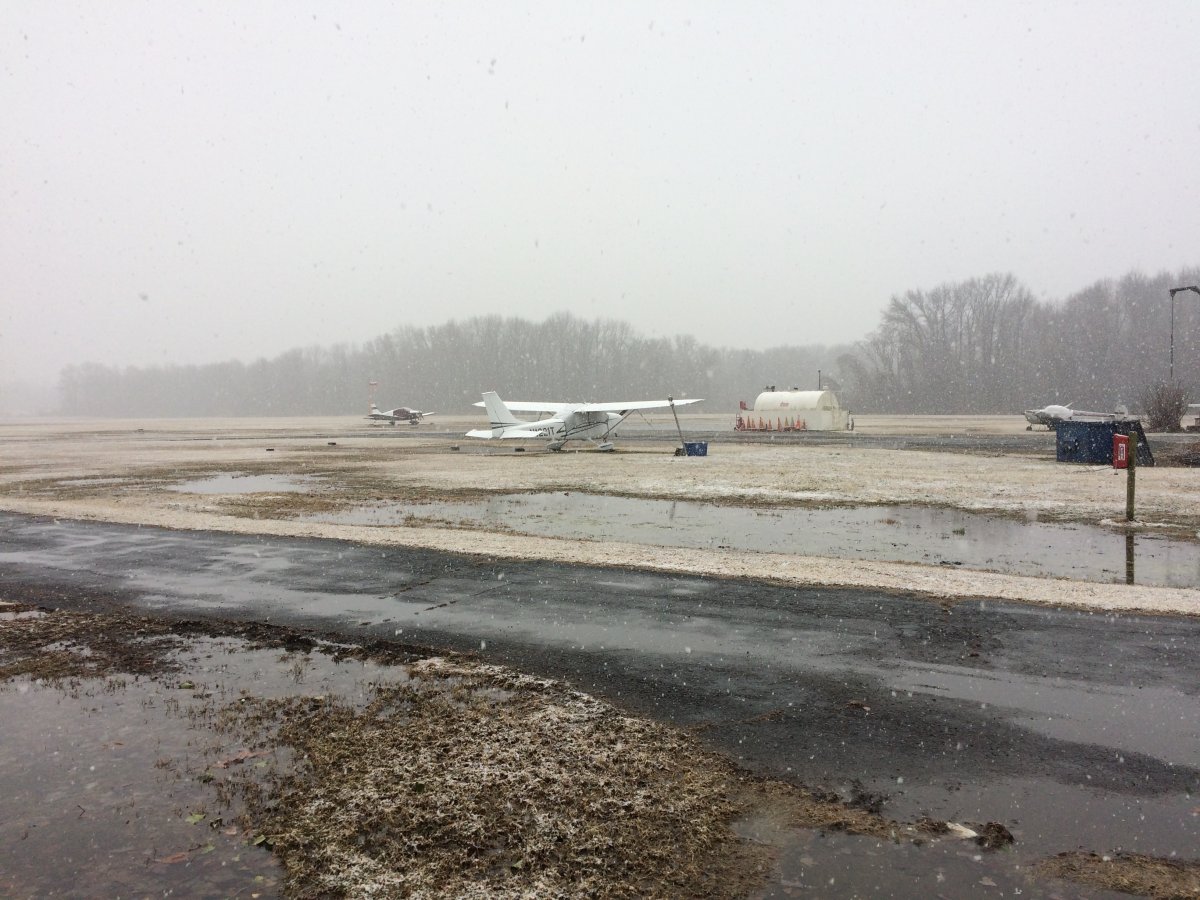 |
|
|
The final installation task were the wires running to the brainbox via a 15-pin D-Sub connector. There are only eight wires required. Four of those are for the brainbox: power, ground, anonymous mode, and warning light. The anonymous mode requires a switch and the warning light requires, you guessed it, a light.
The other four wires go to a USB plug which is used to enter information like N-number into the brain box via a computer.
Normally, making the 15-pin D-Sub connector would be a piece of cake for me. I have the connector, pins and the special crimping tool they need. Plus I have done it many, many times. But then I discovered that not all 15-pin D-Sub connectors are the same! The brain box requires a three-level connector. I'm used to two-level connectors which accept the crimped pins. The three-level connector, although inexpensive, requires soldering. I could not find anywhere to buy a three-level connector that accepts the crimped pin. So soldering it would be. Soldering doesn't bother me, but the little wire trays on the three-level are extremely close together. On my first try, I didn't even come close to doing it correctly. I had to regroup, buy a better soldering iron, and watch a few "how to solder" videos on Youtube. My second try was dramatically better and I succeeded. I also had to solder the four wires to the USB connector -- also tight quarters -- but I managed to get it done.
So I built my wiring harness, coax cables, and hooked everything up. The next step was to program the brain box. Garmin supplies a little software program for this. In the airplane, I plugged my homemade USB connector into the laptop, turned on the transponder, and amazingly it worked! I could see the brainbox info on the laptop. I entered my N-number and a few other things, and I guess they flowed to the brain box. Everything seemed to be in order.
This picture shows the two level, pin D-Sub connecter I am familiar with at top. To the left is the three-level D-Sub connector the brain box requires. You have to solder the wires into the little "trays". On the right is the USB port connector. I bought ten of them off Amazon; they were cheap. They too required soldering. At bottom is a simple warning light; also bought off Amazon.
|
| |
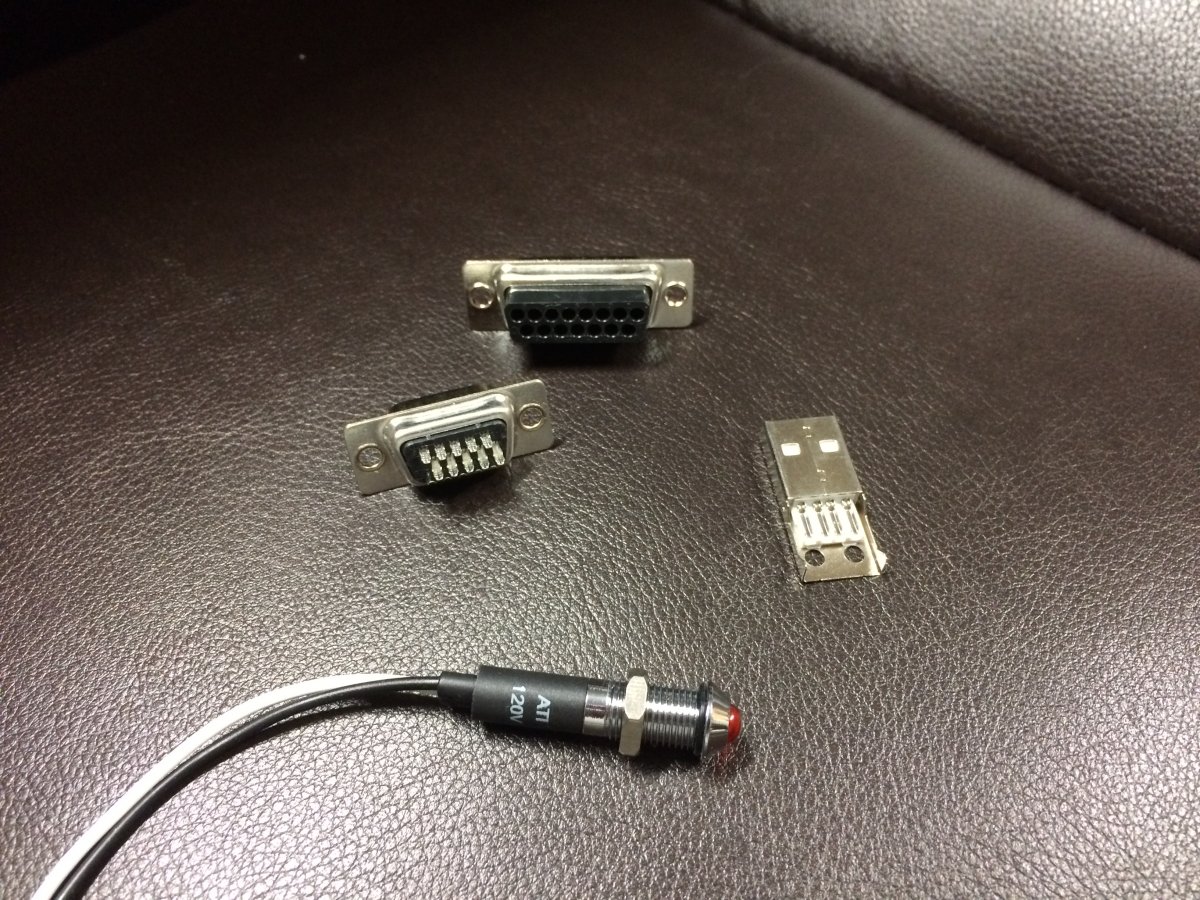 |
|
|
I installed the anonymous switch and the warning light in the panel -- just to the right of the Dynon.
Now there was nothing to do now but go flying and test it out. To test the ADS-B Out, you have to fly in airspace where it will show up. I decided to just fly down and up the Eastern Shore which is well within the BWI Mode C veil. I had also read somewhere to try and fly straight and level for the best transmission. So I flew over to the Eastern Shore and then headed south to the southern end of Kent Island. I flew straight and level at 3,500 feet or so. Straight and level in the RV? I know, right?
|
| |
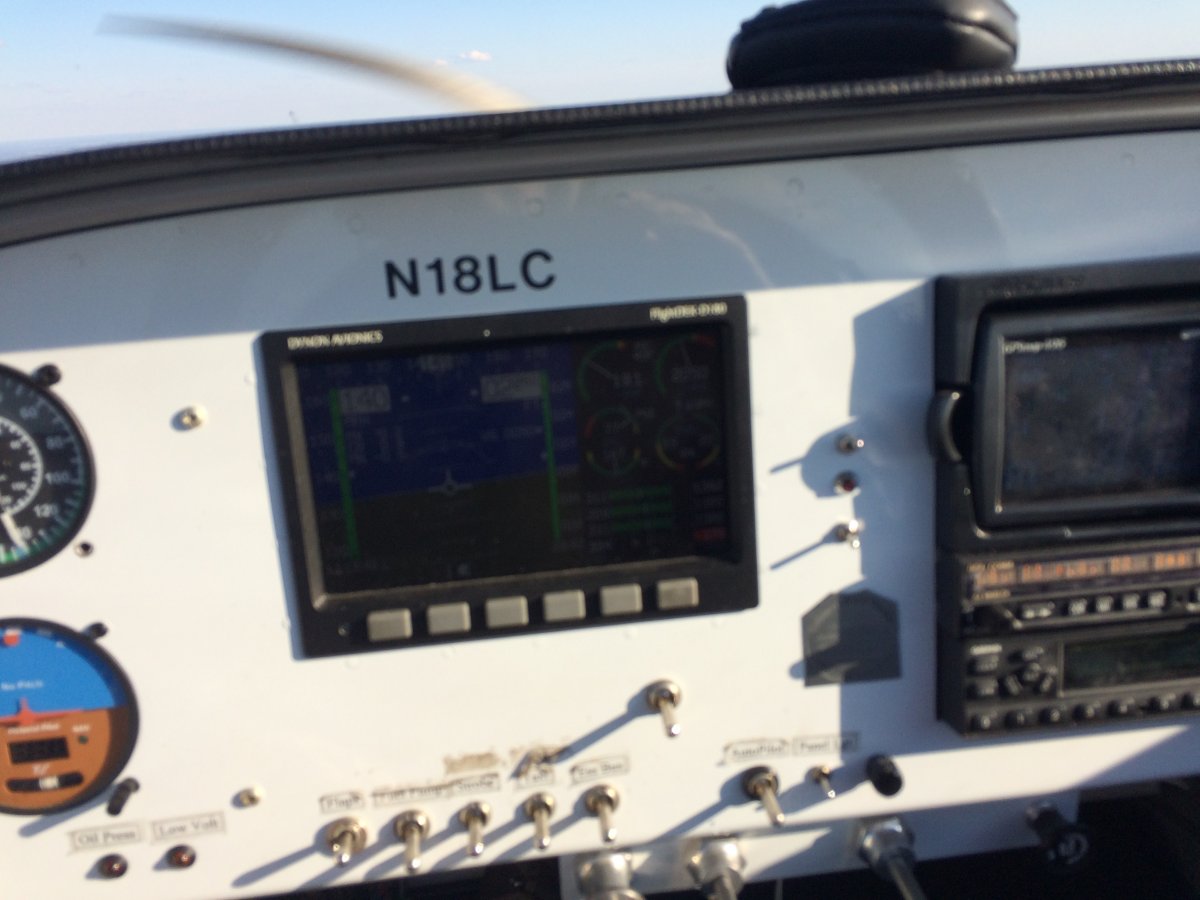 |
|
| Looking down the Bay. You can just barely make out the Chesapeake Bay bridge at center right. |
| |
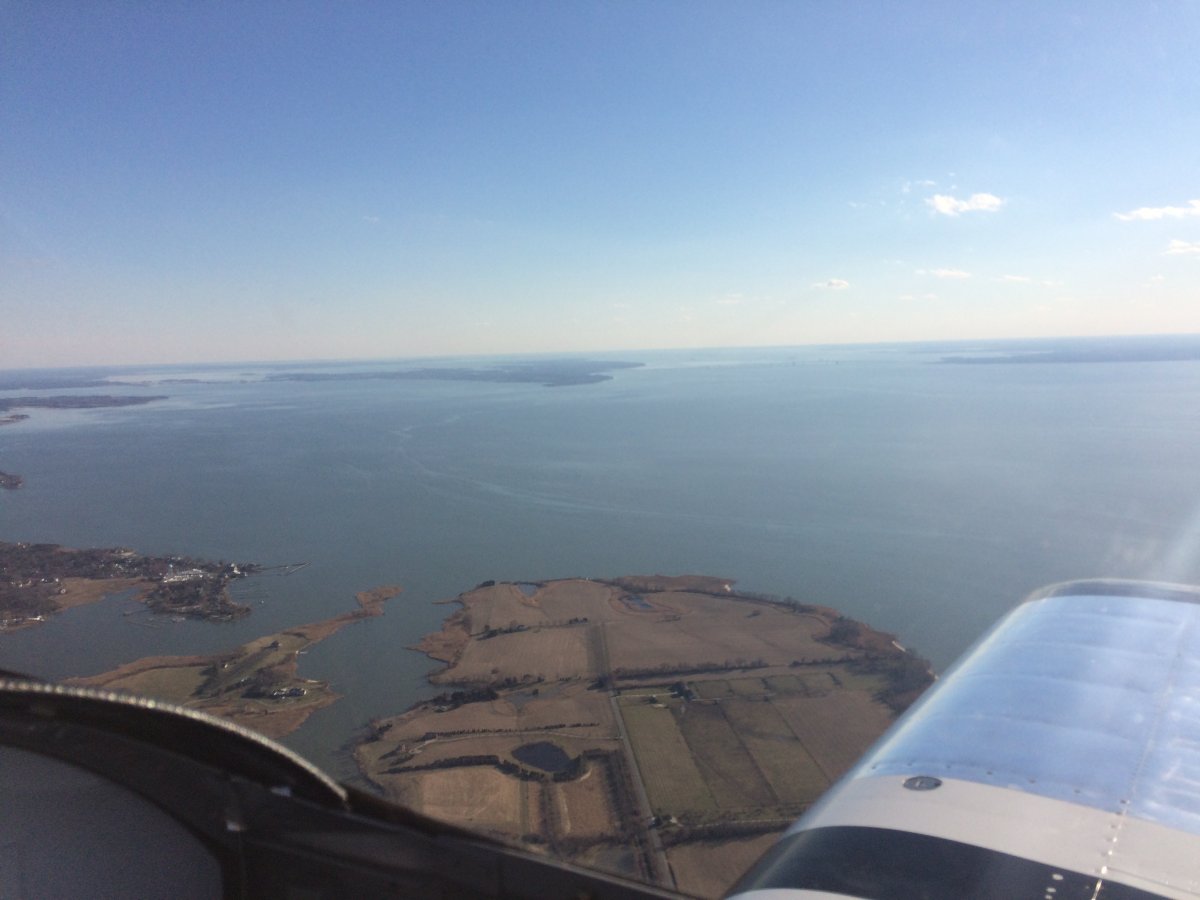 |
|
|
There is no action required for operation of the ADS-B Out. It is powered along with the transponder, so when the transponder is one, it is on. There is no way of knowing if it is working or not, other than a warning light that would come on if something is wrong, I suppose. I do have an Anonymous Mode switch I can turn on. When it is on, others only see 1200 instead of my N-number.
Looking east over the eastern shore.
|
| |
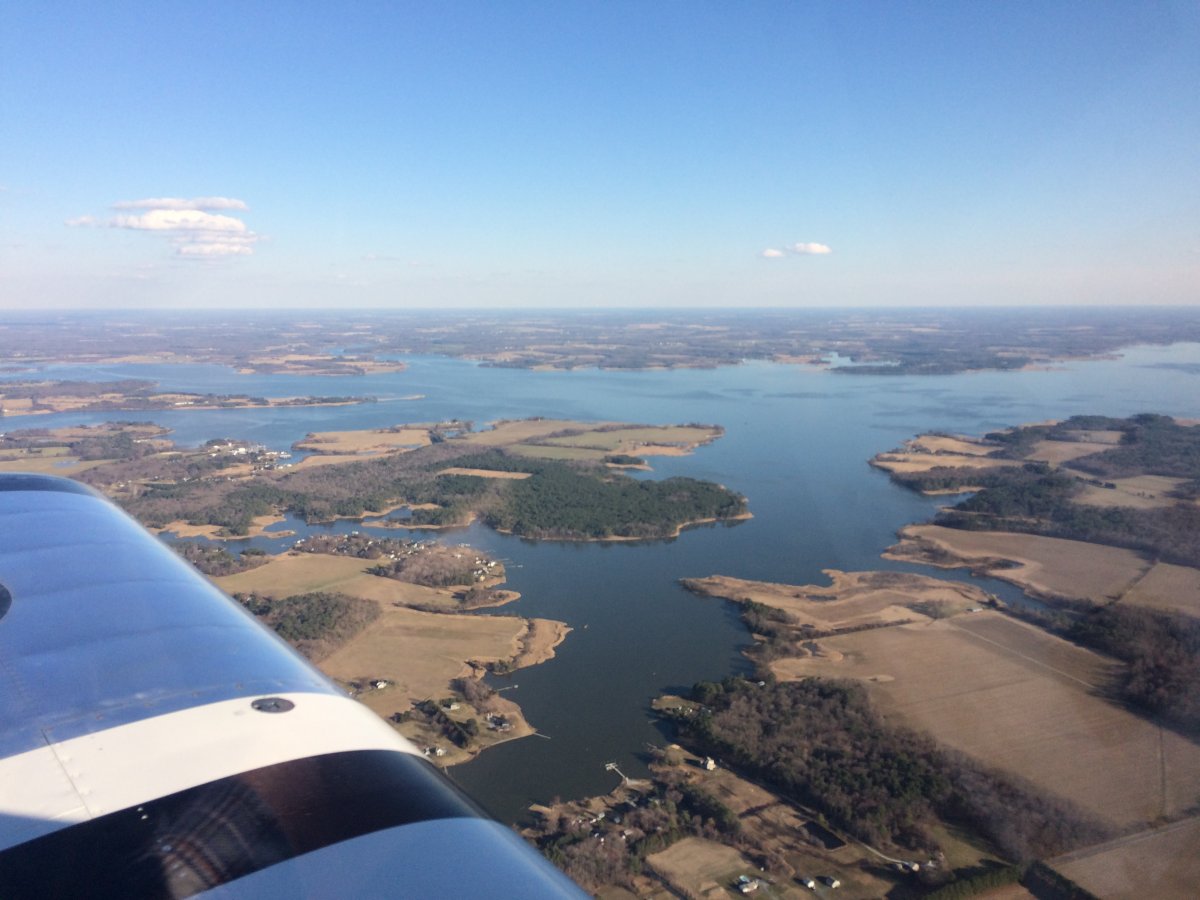 |
|
| About to pass by the Chesapeake Bay bridge. |
| |
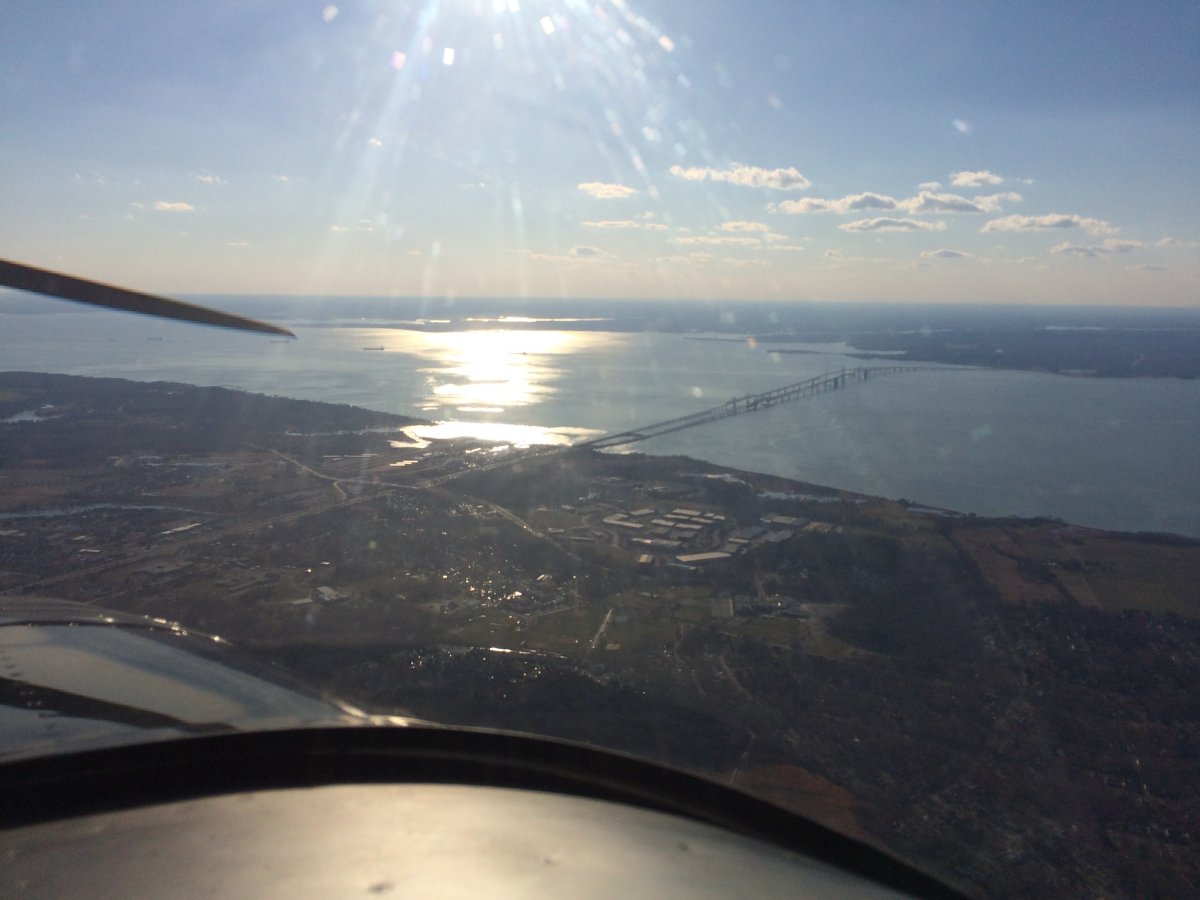 |
|
| After flying straight, I made a U-turn about here, at the southern tip of Kent Island. I did a 15 degree banked turn. That's just wrong in an RV! |
| |
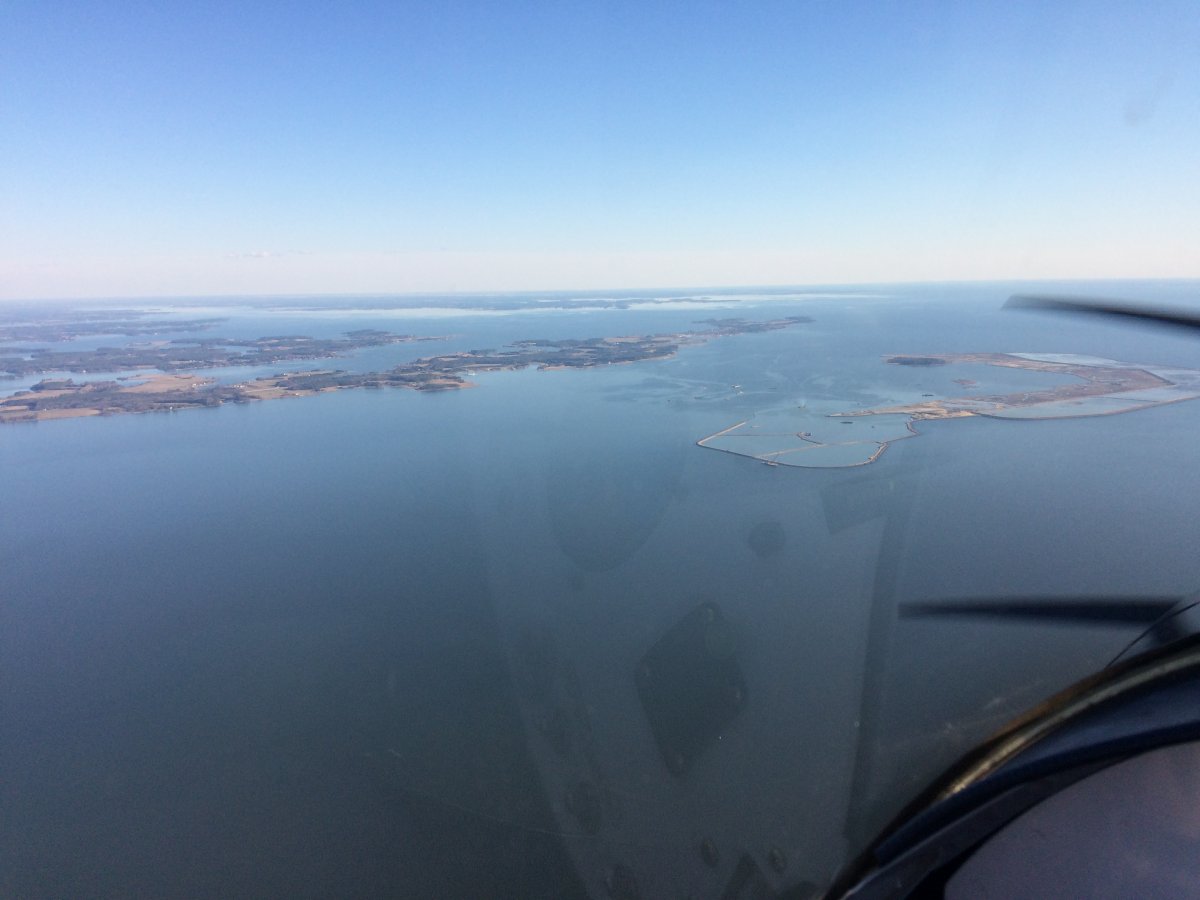 |
|
| Now heading back north. Flying conditions were pretty good, weather-wise, as you can see. |
| |
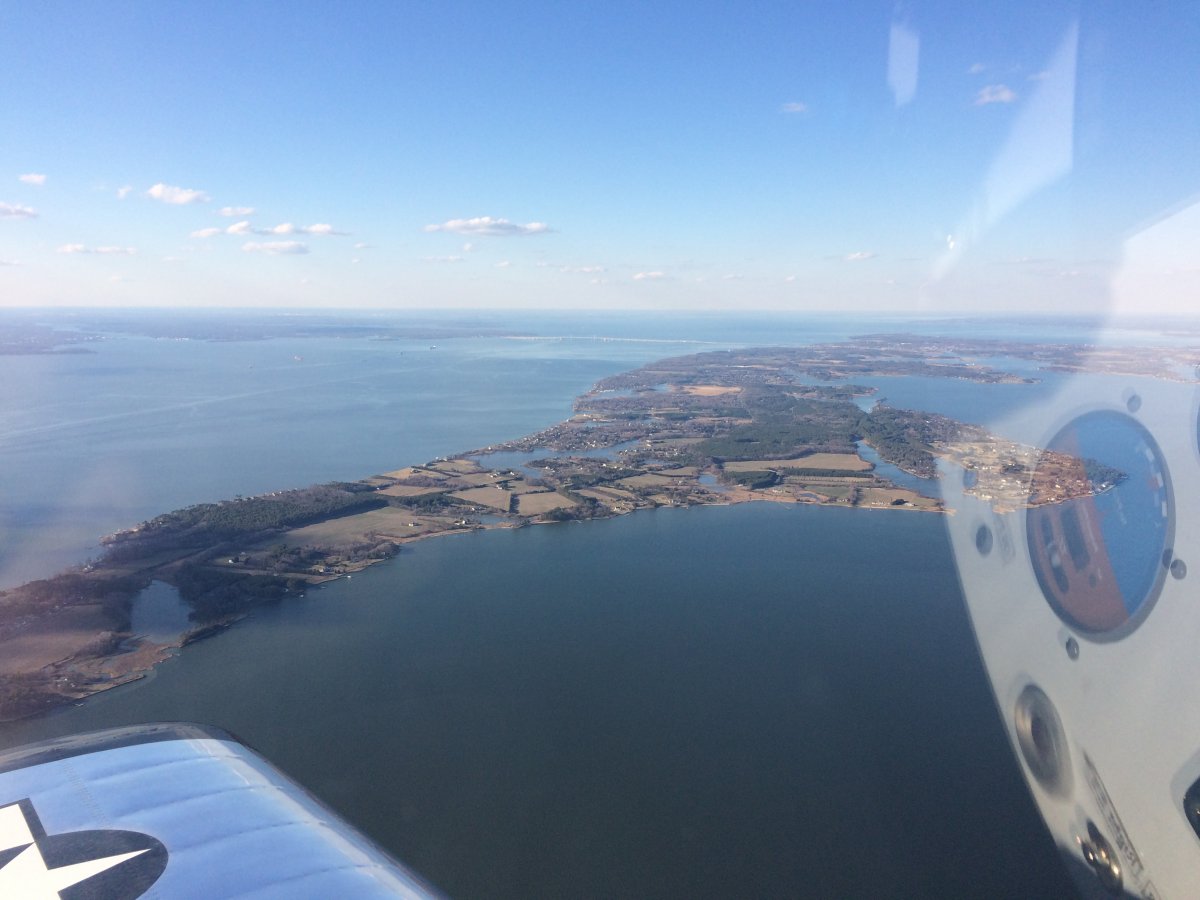 |
|
|
Looking west across the bay.
|
| |
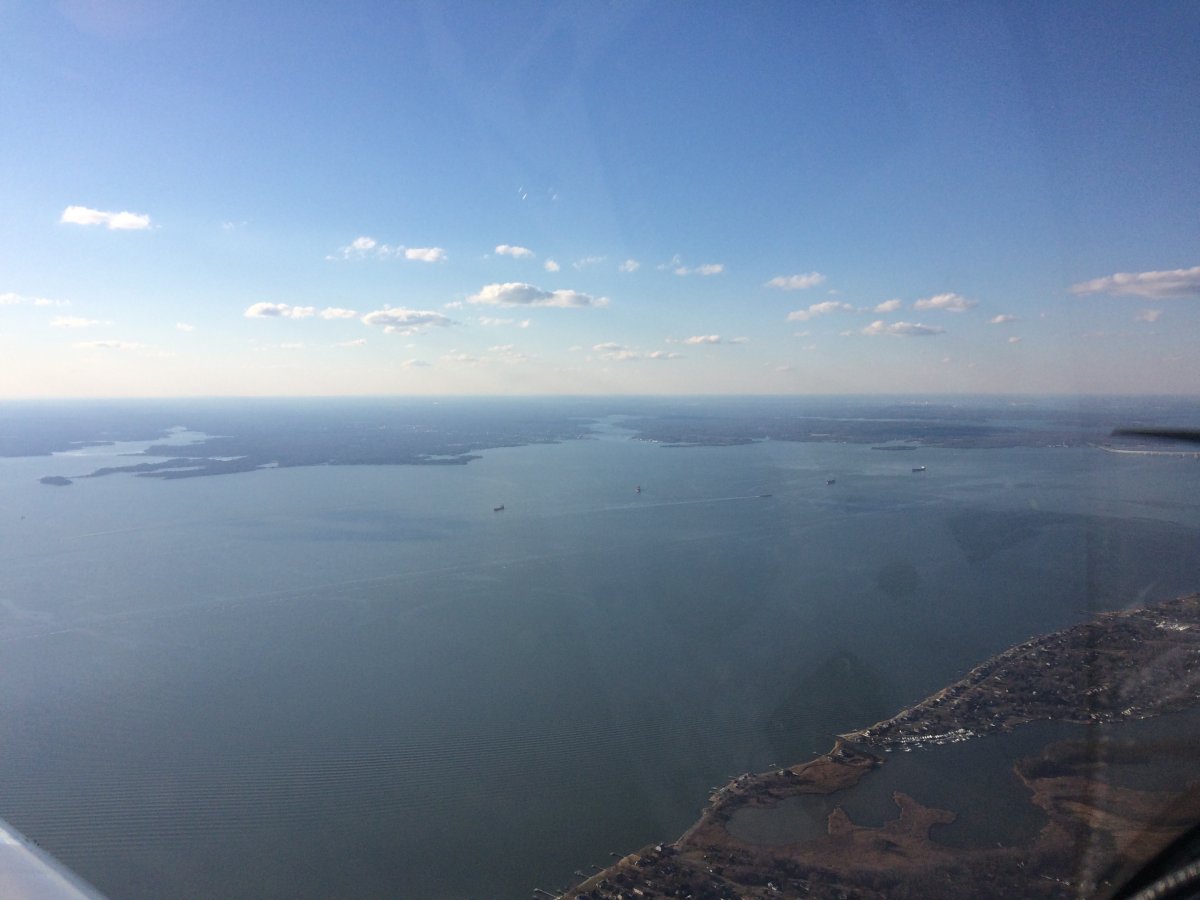 |
|
| Looking east. |
| |
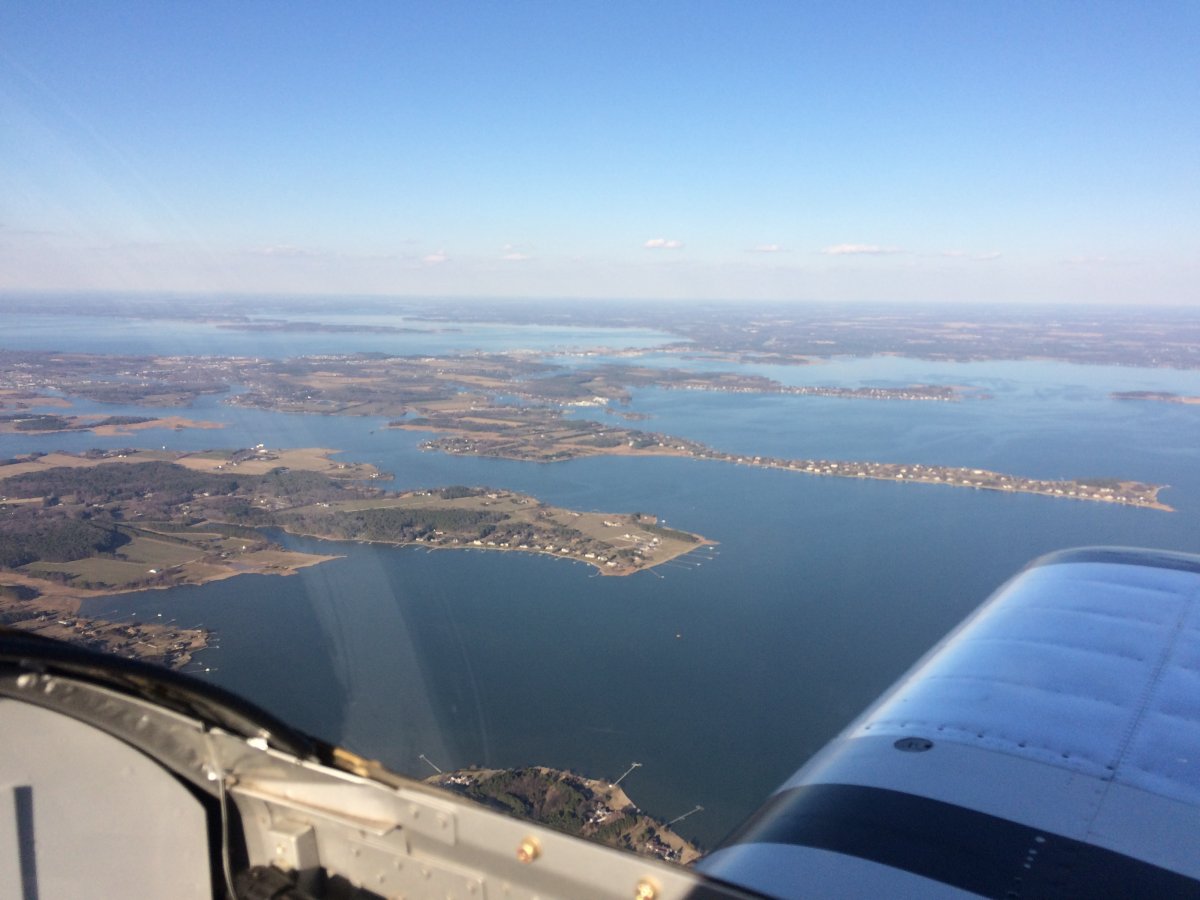 |
|
|
There's the Bay Bridge again.
|
| |
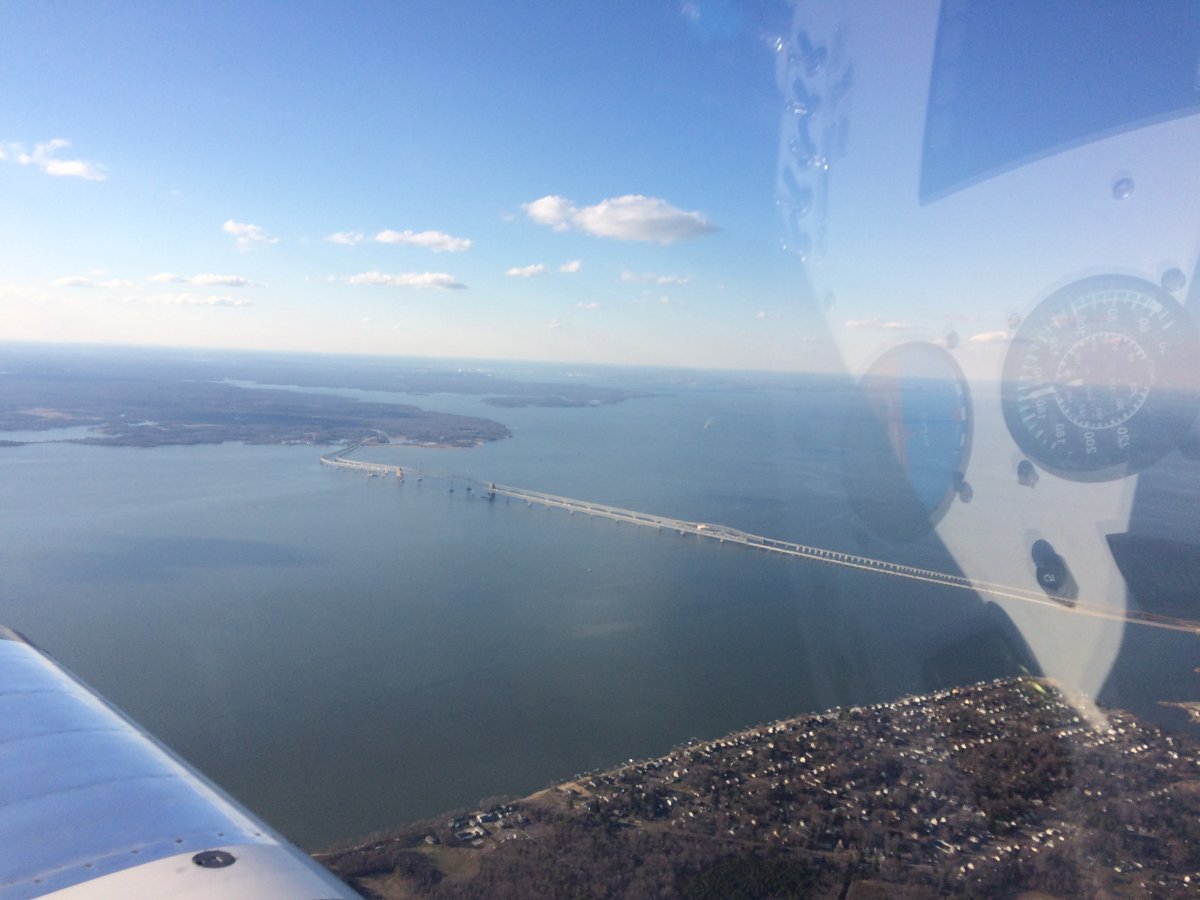 |
|
| Looking east at Kent Narrows bridge. |
| |
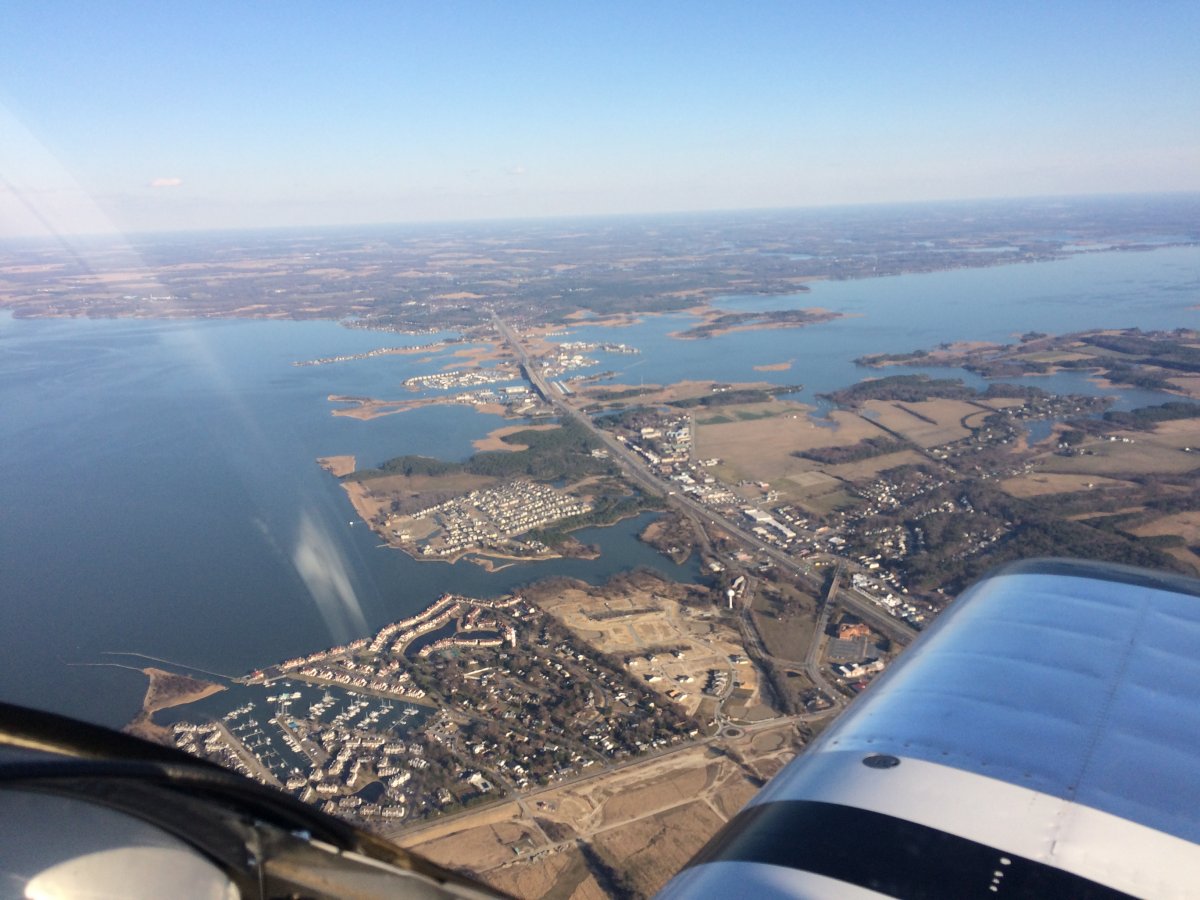 |
|
| |
| |
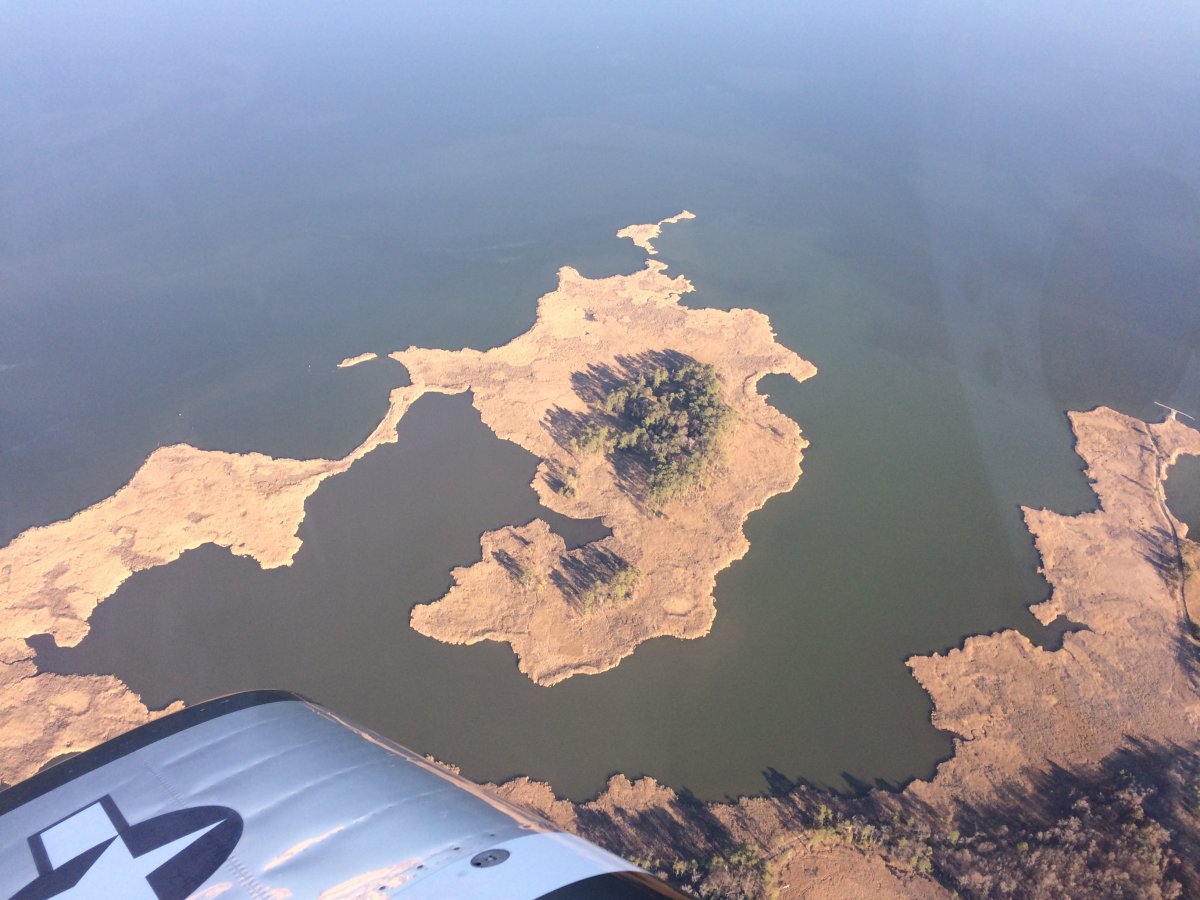 |
|
|
Taxiing back at the Skypark.
|
| |
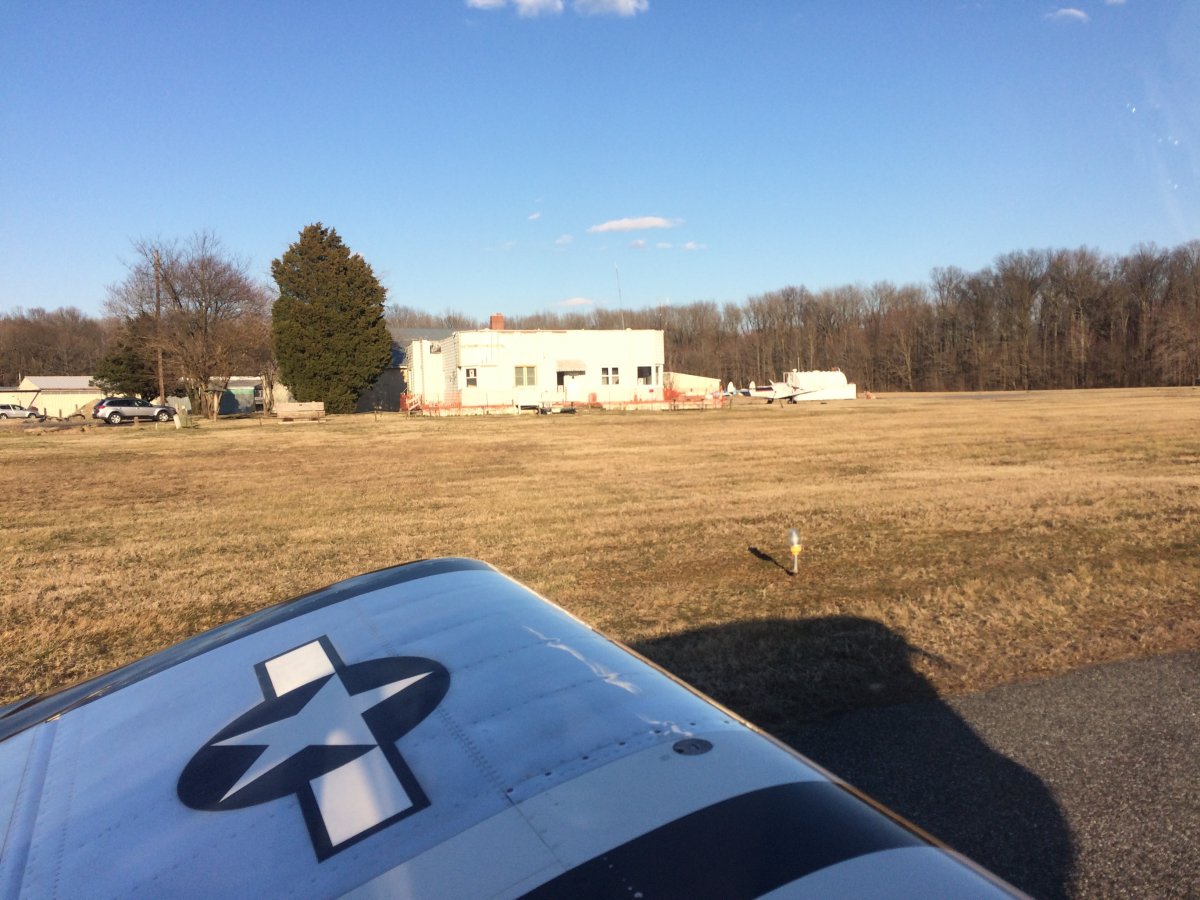 |
|
|
Back at home, I logged into the FAA web page with my reservation number and generated the below documents. Successful test! It's a miracle!
This document has the all important incentive code required to receive the $500 rebate.
|
| |
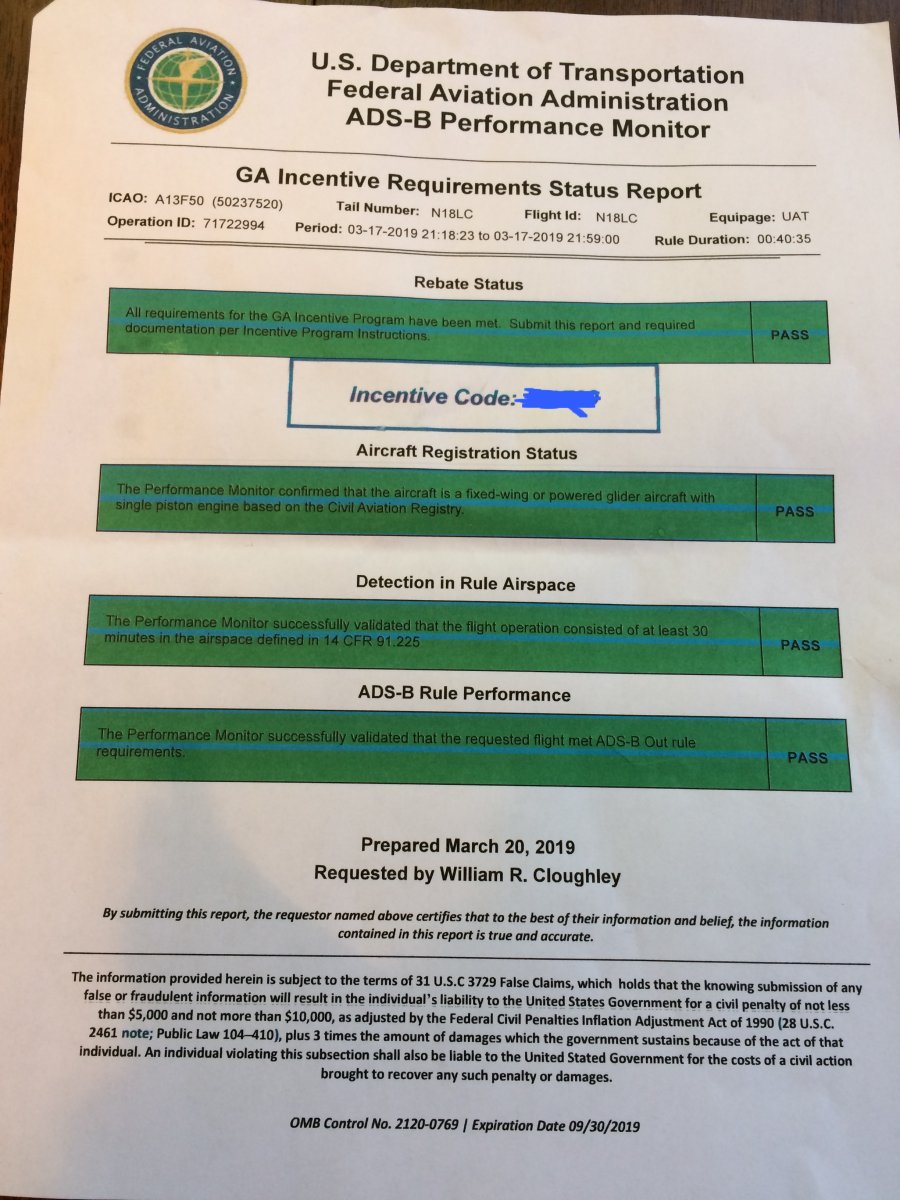 |
|
|
I also received the following six-page performance report which is pretty cryptic. Nothing was highlighted in red so I guess it is a good report.
Anyways, I filled out the online form to get my $500 rebate, and soon received an email saying that I would be receiving my rebate in six weeks. Cool.
Later, after a few flights, I looked up my N-number on FlightAware.com and sure enough, there were my flight tracks. So the thing definately is working. I'm legal for 2020. And $1,300 poorer.
A month of so later: after a flew flights with the ADS-B Out and also using ADS-B In on my ipad, here are my thoughts from the general aviation point of view. I have some concernts about it. Because the RV is a fast plane, you really have to keep your eyes "out of the cockpit", looking for birds and other airplanes. When you see birds, you only have a second or two to react. It's too easy to fall in the trap of focusing on the iPad screen. And maybe run into a bird, or another plane not showing up on your Traffic for some reason. I think ADS-B for general aviation will be especially worrisome around airports, fly-ins or the big ones like AirVenture and Sun 'N Fun, where there is lots of traffic and pilots with their heads down in the cockpit is not a good thing. I'm worried that ADS-B might actually increases the possibility of mid-air collisions or bird strikes.
I don't like the unfunded aspect of ADS-B Out either. What's another couple of thousand of dollars? And they wonder why General Aviation is slowly dying. My two cents.
Eventually they will put ADS-B Out into drones which will require a cheap, small and light solution which probably already exists.
I think the FAA should have just sent out a request for proposal to vendors to develop an ADS-B Out solution with a customer cost of no more than $300. Subsidize the vendors as required to hit the $300. Instead, we have the current mess where GA airplane owners are having to shell out $1,300 at a minimum. $3,000 or more is probably not unusual for the owner who has to have an A&P install it.
|
| |
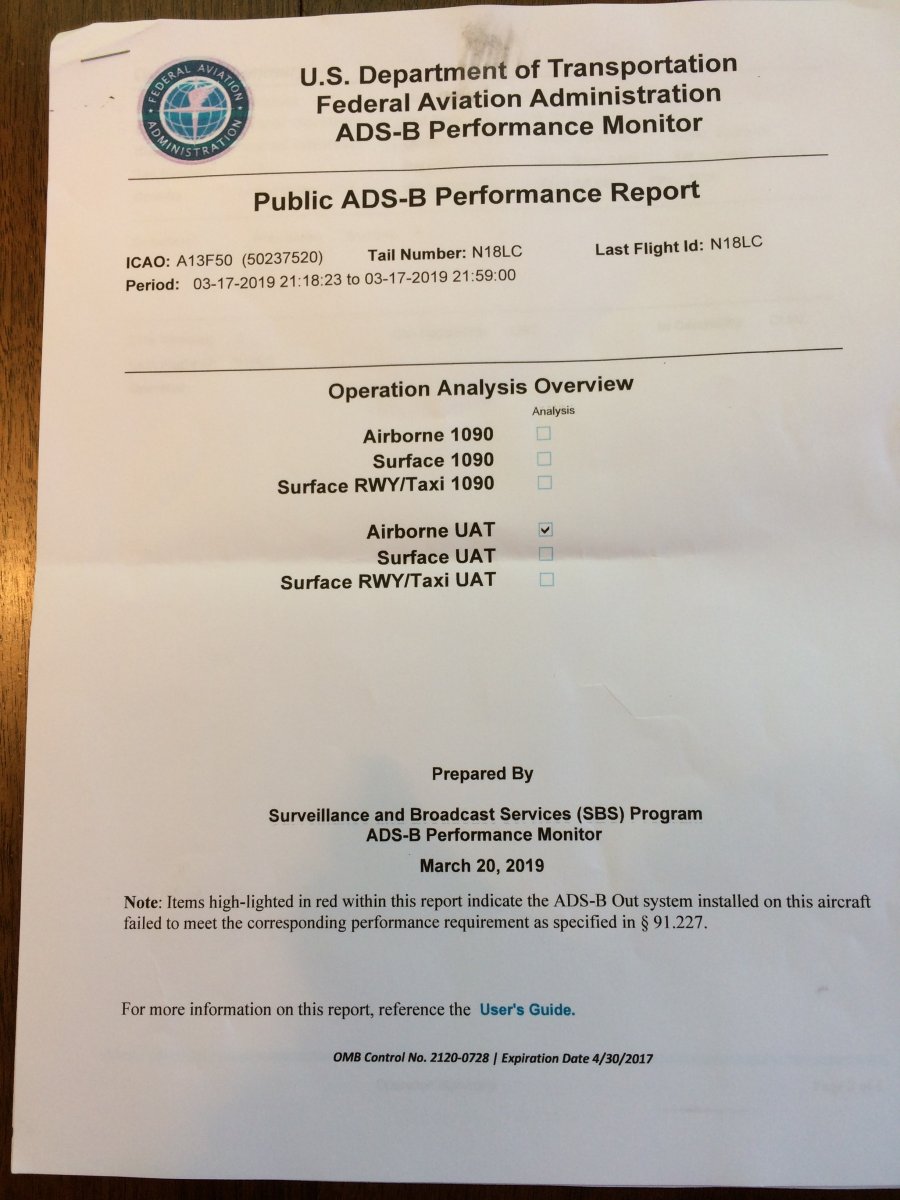 |
|
| |
| |
|
|
|
|
|
|




















